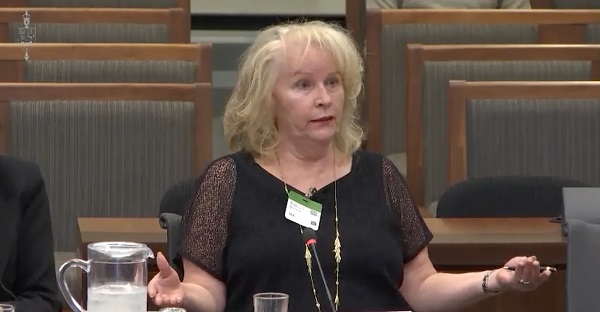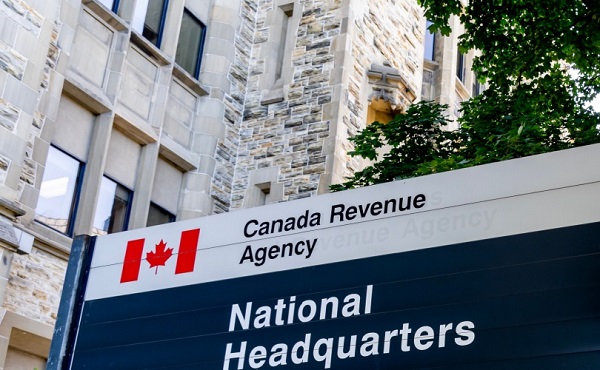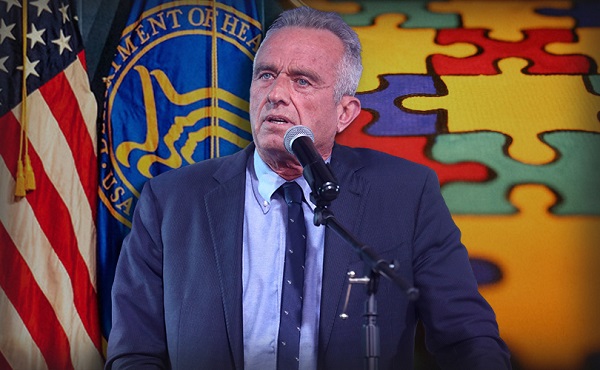Addictions
Ottawa “safer supply” clinic criticized by distraught mother

An Ottawa mother, who lost her daughter to addiction, is frustrated by Recovery Care’s failure to help her opioid-addicted son
Masha Krupp has already lost one child to an overdose and fears she could lose another.
In 2020, her 47-year-old daughter Larisa died from methadone toxicity just 12 days into an opioid addiction treatment program. The program is run by Recovery Care, an Ottawa-based harm reduction clinic with five locations across the city, which aims to stabilize drug users and eventually wean them off more potent drugs.
Krupp says she is skeptical about the effectiveness of the support and counseling services that Recovery Care claims to provide and believes the clinic was negligent in her daughter’s case.
On Oct. 22, the Ottawa mother testified before the House of Commons Standing Committee on Health, which is studying Canada’s opioid epidemic.
In her testimony, Krupp said her daughter was prescribed 30mg of methadone — 50 per cent more than the recommended induction dose — and was not given an opiate tolerance test before starting the program. Larisa received treatment at the Bells Corners Recovery Care location.
Krupp’s 30-year-old son, whom Canadian Affairs agreed not to name, has been a patient at Recovery Care’s ByWard Market location since 2021, where he receives a combination of methadone and hydromorphone, another prescription drug administered through the treatment program.
“Three years later, my son is still using fentanyl, crack cocaine and methadone, despite being with Dr. [Charles] Breau and with Recovery Care for over three years,” Krupp testified.
“About four weeks ago, I had to call 9-1-1 because he was overdosing,” Krupp told Canadian Affairs in an interview. “This is on the safer supply program … three years in, I should not be calling 9-1-1.”
Open diversion
Founded in 2018, Recovery Care is a partner in the Safer Supply Ottawa initiative. The initiative, which is led by Ottawa Public Health and managed by the nonprofit Pathways to Recovery, provides prescription pharmaceutical opioids to individuals who are at high risk of overdose.
Pathways to Recovery works with a network of service providers throughout the city — including Recovery Care — to administer safer supply.
Krupp says she supports the concept of safer supply, but believes it needs to be administered differently.
“You can’t give addicts 28 pills and say ‘Oh here you go,’” she said in her testimony. “They sell for three dollars a pop on the street,” she said, referring to the practice of some individuals selling their prescribed medications to fund purchases of more intense street drugs like heroin and fentanyl.
Krupp says she sees her son — and other patients of the program — openly divert their prescribed medications outside of the Recovery Care clinic in ByWard Market, where she parks to wait for him.
“[B]ecause there’s no treatment attached to [my son’s safer supply], it’s just the doctor gives him all these pills, he diverts them, gets the drugs he needs, and he’s still an addict,” Krupp said in her testimony.
Donna Sarrazin, chief executive of Recovery Care, told Canadian Affairs that Recovery Care has measures to address diversion, including security cameras and onsite security staff.
“Patients are educated at intake and ongoing that diversion is not permitted and that they could be removed from the program,” she said in an emailed statement.
“Recovery Care works to understand diversion and has continued to progress programs and actions to address the issues. Concerns expressed by the community and our teams are taken seriously,” she said.
Krupp says she has communicated her concerns about her son reselling his prescribed medications to his doctor, Dr. Charles Breau, both in-person and through faxed letters. “I never hear back from the doctor. Never,” she said.
Krupp also said in her testimony that police have spoken to her son about his diversion.
Breau did not respond to inquiries made to his clinical teams at Recovery Care or Montfort Hospital, a teaching hospital affiliated with the University of Ottawa.
Sarrazin said Breau is not able to comment on patient or family care.
In Krupp’s view, the safer supply program would be more successful if drug users were required to take prescribed medications under supervision.
“If he was receiving his hydromorphone under witnessed dosage and there was a treatment plan attached to it, I believe it would be successful,” she said.
Dr. Eileen de Villa, the City of Toronto’s medical officer of health, reinforced this point at the Oct. 22 Health Committee meeting. She said Toronto Public Health’s injectable opioid agonist therapy program — which combines observed administration with a treatment plan — has seen “incredible results.”
De Villa shared a case of a pregnant client who entered the program. “She went on to have a successful pregnancy, a healthy baby, has actually successfully completed the treatment, and is now housed and has even gained custody of her other children,” she said.
Subscribe for free to get BTN’s latest news and analysis, or donate to our journalism fund.
‘An affront to me’
Krupp also says Recovery Care fails to deliver on its promise of supporting patients’ mental health needs. Recovery Care’s website says its clinics offer “mental health programs which are essential to every treatment plan.”
Krupp and her son’s father have both requested a clear treatment plan and consistent counselling for their son. But he was started on safer supply after participating in only one virtual counselling session, she says.
She says Recovery Care has only one mental health counselor who services four of Recovery Care’s clinics. “If you’re getting $2-million-plus a year in funding, you should be able to staff each clinic with one on-site counselor five days a week,” she said.
Instead of personalized assistance, her son received “a sheaf of photocopies” offering generic services like Narcotics Anonymous and crisis helplines. “It’s almost an affront to me, as a taxpayer and a mother of an addict,” Krupp said.
Krupp says that, following her testimony to the parliamentary committee, Breau reached out to offer her son a mental health counseling session for the first time.
Sarrazin told Canadian Affairs that patients are encouraged to request counseling at any time. “Currently there is no wait list and appointments can be booked within 1 week,” she said in her emailed statement.
Class actions
Today, Krupp is considering launching a class-action lawsuit against Health Canada and the Government of Canada, challenging both the enactment of safer supply and the loosening of methadone dispensing requirements in 2017. She believes these changes contributed to her daughter’s death in 2020.
She is also considering joining an existing class-action lawsuit in B.C., which alleges Health Canada failed to monitor the distribution of drugs provided through safer supply programs.
The Pathways to Recovery initiative received $9.69-million in funding from Health Canada from July 2020 to March 2025. In June 2023, Health Canada allocated an additional $1.9 million to expand Ottawa’s safer supply program across five sites and improve access to practitioners, mental health support, housing and other services.
“I want to see that money being put to a recovery based treatment, not simply people going in and out and getting their medications and just creating this new sub-layer of addicts,” Krupp said.
This article was produced through the Breaking Needles Fellowship Program, which provided a grant to Canadian Affairs, a digital media outlet, to fund journalism exploring addiction and crime in Canada. Articles produced through the Fellowship are co-published by Break The Needle and Canadian Affairs.
Subscribe for free to get BTN’s latest news and analysis, or donate to our journalism fund.
2025 Federal Election
Poilievre to invest in recovery, cut off federal funding for opioids and defund drug dens

From Conservative Party Communications
Poilievre will Make Recovery a Reality for 50,000 Canadians
Conservative Leader Pierre Poilievre pledged he will bring the hope that our vulnerable Canadians need by expanding drug recovery programs, creating 50,000 new opportunities for Canadians seeking freedom from addiction. At the same time, he will stop federal funding for opioids, defund federal drug dens, and ensure that any remaining sites do not operate within 500 meters of schools, daycares, playgrounds, parks and seniors’ homes, and comply with strict new oversight rules that focus on pathways to treatment.
More than 50,000 people have lost their lives to fentanyl since 2015—more Canadians than died in the Second World War. Poilievre pledged to open a path to recovery while cracking down on the radical Liberal experiment with free access to illegal drugs that has made the crisis worse and brought disorder to local communities.
Specifically, Poilievre will:
- Fund treatment for 50,000 Canadians. A new Conservative government will fund treatment for 50,000 Canadians in treatment centres with a proven record of success at getting people off drugs. This includes successful models like the Bruce Oake Recovery Centre, which helps people recover and reunite with their families, communities, and culture. To ensure the best outcomes, funding will follow results. Where spaces in good treatment programs exist, we will use them, and where they need to expand, these funds will allow that.
- Ban drug dens from being located within 500 metres of schools, daycares, playgrounds, parks, and seniors’ homes and impose strict new oversight rules. Poilievre also pledged to crack down on the Liberals’ reckless experiments with free access to illegal drugs that allow provinces to operate drug sites with no oversight, while pausing any new federal exemptions until evidence justifies they support recovery. Existing federal sites will be required to operate away from residential communities and places where families and children frequent and will now also have to focus on connecting users with treatment, meet stricter regulatory standards or be shut down. He will also end the exemption for fly-by-night provincially-regulated sites.
“After the Lost Liberal Decade, Canada’s addiction crisis has spiralled out of control,” said Poilievre. “Families have been torn apart while children have to witness open drug use and walk through dangerous encampments to get to school. Canadians deserve better than the endless Liberal cycle of crime, despair, and death.”
Since the Liberals were first elected in 2015, our once-safe communities have become sordid and disordered, while more and more Canadians have been lost to the dangerous drugs the Liberals have flooded into our streets. In British Columbia, where the Liberals decriminalized dangerous drugs like fentanyl and meth, drug overdose deaths increased by 200 percent.
The Liberals also pursued a radical experiment of taxpayer-funded hard drugs, which are often diverted and resold to children and other vulnerable Canadians. The Vancouver Police Department has said that roughly half of all hydromorphone seizures were diverted from this hard drugs program, while the Waterloo Regional Police Service and Niagara Regional Police Service said that hydromorphone seizures had exploded by 1,090% and 1,577%, respectively.
Despite the death and despair that is now common on our streets, bizarrely Mark Carney told a room of Liberal supporters that 50,000 fentanyl deaths in Canada is not “a crisis.” He also hand-picked a Liberal candidate who said the Liberals “would be smart to lean into drug decriminalization” and another who said “legalizing all drugs would be good for Canada.”
Carney’s star candidate Gregor Robertson, an early advocate of decriminalization and so-called safe supply, wanted drug dens imposed on communities without any consultation or public safety considerations. During his disastrous tenure as Vancouver Mayor, overdoses increased by 600%.
Alberta has pioneered an approach that offers real hope by adopting a recovery-focused model of care, leading to a nearly 40 percent reduction in drug-poisoning deaths since 2023—three times the decrease seen in British Columbia. However, we must also end the Liberal drug policies that have worsened the crisis and harmed countless lives and families.
To fund this policy, a Conservative government will stop federal funding for opioids, defund federal drug dens, and sue the opioid manufacturers and consulting companies who created this crisis in the first place.
“Canadians deserve better than the Liberal cycle of crime, despair, and death,” said Poilievre. “We will treat addiction with compassion and accountability—not with more taxpayer-funded poison. We will turn hurt into hope by shutting down drug dens, restoring order in our communities, funding real recovery, and bringing our loved ones home drug-free.”
Addictions
There’s No Such Thing as a “Safer Supply” of Drugs

By Adam Zivo
Sweden, the U.K., and Canada all experimented with providing opioids to addicts. The results were disastrous.
[This article was originally published in City Journal, a public policy magazine and website published by the Manhattan Institute for Policy Research. We encourage our readers to subscribe to them for high-quality analysis on urban issues]
Last August, Denver’s city council passed a proclamation endorsing radical “harm reduction” strategies to address the drug crisis. Among these was “safer supply,” the idea that the government should give drug users their drug of choice, for free. Safer supply is a popular idea among drug-reform activists. But other countries have already tested this experiment and seen disastrous results, including more addiction, crime, and overdose deaths. It would be foolish to follow their example.
The safer-supply movement maintains that drug-related overdoses, infections, and deaths are driven by the unpredictability of the black market, where drugs are inconsistently dosed and often adulterated with other toxic substances. With ultra-potent opioids like fentanyl, even minor dosing errors can prove fatal. Drug contaminants, which dealers use to provide a stronger high at a lower cost, can be just as deadly and potentially disfiguring.
Because of this, harm-reduction activists sometimes argue that governments should provide a free supply of unadulterated, “safe” drugs to get users to abandon the dangerous street supply. Or they say that such drugs should be sold in a controlled manner, like alcohol or cannabis—an endorsement of partial or total drug legalization.
But “safe” is a relative term: the drugs championed by these activists include pharmaceutical-grade fentanyl, hydromorphone (an opioid as potent as heroin), and prescription meth. Though less risky than their illicit alternatives, these drugs are still profoundly dangerous.
The theory behind safer supply is not entirely unreasonable, but in every country that has tried it, implementation has led to increased suffering and addiction. In Europe, only Sweden and the U.K. have tested safer supply, both in the 1960s. The Swedish model gave more than 100 addicts nearly unlimited access through their doctors to prescriptions for morphine and amphetamines, with no expectations of supervised consumption. Recipients mostly sold their free drugs on the black market, often through a network of “satellite patients” (addicts who purchased prescribed drugs). This led to an explosion of addiction and public disorder.
Most doctors quickly abandoned the experiment, and it was shut down after just two years and several high-profile overdose deaths, including that of a 17-year-old girl. Media coverage portrayed safer supply as a generational medical scandal and noted that the British, after experiencing similar problems, also abandoned their experiment.
While the U.S. has never formally adopted a safer-supply policy, it experienced something functionally similar during the OxyContin crisis of the 2000s. At the time, access to the powerful opioid was virtually unrestricted in many parts of North America. Addicts turned to pharmacies for an easy fix and often sold or traded their extra pills for a quick buck. Unscrupulous “pill mills” handed out prescriptions like candy, flooding communities with OxyContin and similar narcotics. The result was a devastating opioid epidemic—one that rages to this day, at a cumulative cost of hundreds of thousands of American lives. Canada was similarly affected.
The OxyContin crisis explains why many experienced addiction experts were aghast when Canada greatly expanded access to safer supply in 2020, following a four-year pilot project. They worried that the mistakes of the recent past were being made all over again, and that the recently vanquished pill mills had returned under the cloak of “harm reduction.”
Subscribe for free to get BTN’s latest news and analysis – or donate to our investigative journalism fund.
Most Canadian safer-supply prescribers dispense large quantities of hydromorphone with little to no supervised consumption. Patients can receive up to 40 eight-milligram pills per day—despite the fact that just two or three are enough to cause an overdose in someone without opioid tolerance. Some prescribers also provide supplementary fentanyl, oxycodone, or stimulants.
Unfortunately, many safer-supply patients sell or trade a significant portion of these drugs—primarily hydromorphone—in order to purchase more potent illicit substances, such as street fentanyl.
The problems with safer supply entered Canada’s consciousness in mid-2023, through an investigative report I wrote for the National Post. I interviewed 14 addiction physicians from across the country, who testified that safer-supply diversion is ubiquitous; that the street price of hydromorphone collapsed by up to 95 percent in communities where safer supply is available; that youth are consuming and becoming addicted to diverted safer-supply drugs; and that organized crime traffics these drugs.
Facing pushback, I interviewed former drug users, who estimated that roughly 80 percent of the safer-supply drugs flowing through their social circles was getting diverted. I documented dozens of examples of safer-supply trafficking online, representing tens of thousands of pills. I spoke with youth who had developed addictions from diverted safer supply and adults who had purchased thousands of such pills.
After months of public queries, the police department of London, Ontario—where safer supply was first piloted—revealed last summer that annual hydromorphone seizures rose over 3,000 percent between 2019 and 2023. The department later held a press conference warning that gangs clearly traffic safer supply. The police departments of two nearby midsize cities also saw their post-2019 hydromorphone seizures increase more than 1,000 percent.
The Canadian government quietly dropped its support for safer supply last year, cutting funding for many of its pilot programs. The province of British Columbia (the nexus of the harm-reduction movement) finally pulled back support last month, after a leaked presentation confirmed that safer-supply drugs are getting sold internationally and that the government is investigating 60 pharmacies for paying kickbacks to safer-supply patients. For now, all safer-supply drugs dispensed within the province must be consumed under supervision.
Harm-reduction activists have insisted that no hard evidence exists of widespread diversion of safer-supply drugs, but this is only because they refuse to study the issue. Most “studies” supporting safer supply are produced by ideologically driven activist-scholars, who tend to interview a small number of program enrollees. These activists also reject attempts to track diversion as “stigmatizing.”
The experiences of Sweden, the United Kingdom, and Canada offer a clear warning: safer supply is a reliably harmful policy. The outcomes speak for themselves—rising addiction, diversion, and little evidence of long-term benefit.
As the debate unfolds in the United States, policymakers would do well to learn from these failures. Americans should not be made to endure the consequences of a policy already discredited abroad simply because progressive leaders choose to ignore the record. The question now is whether we will repeat others’ mistakes—or chart a more responsible course.
Our content is always free –
but if you want to help us commission more high-quality journalism,
consider getting a voluntary paid subscription.
-

 illegal immigration2 days ago
illegal immigration2 days agoDespite court rulings, the Trump Administration shows no interest in helping Abrego Garcia return to the U.S.
-

 2025 Federal Election2 days ago
2025 Federal Election2 days agoEuthanasia is out of control in Canada, but nobody is talking about it on the campaign trail
-

 2025 Federal Election2 days ago
2025 Federal Election2 days agoConservative MP Leslyn Lewis warns Canadian voters of Liberal plan to penalize religious charities
-

 Education2 days ago
Education2 days agoSchools should focus on falling math and reading grades—not environmental activism
-

 2025 Federal Election2 days ago
2025 Federal Election2 days agoHousing starts unchanged since 1970s, while Canadian population growth has more than tripled
-

 2025 Federal Election21 hours ago
2025 Federal Election21 hours agoRCMP Whistleblowers Accuse Members of Mark Carney’s Inner Circle of Security Breaches and Surveillance
-

 Autism1 day ago
Autism1 day agoAutism Rates Reach Unprecedented Highs: 1 in 12 Boys at Age 4 in California, 1 in 31 Nationally
-

 Bjorn Lomborg2 days ago
Bjorn Lomborg2 days agoGlobal Warming Policies Hurt the Poor





